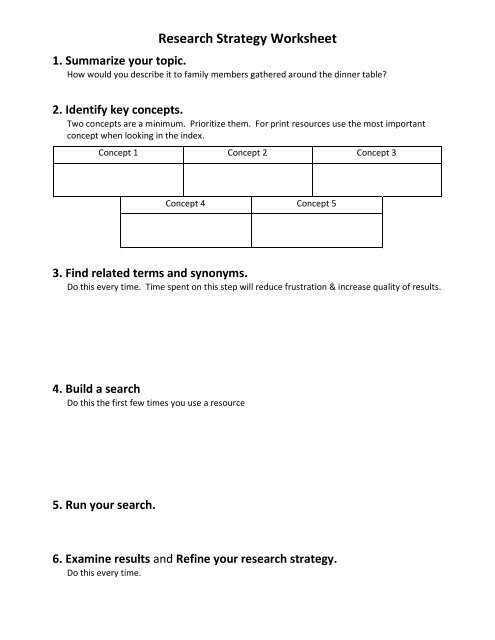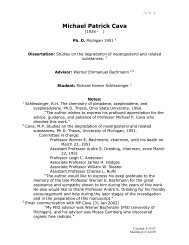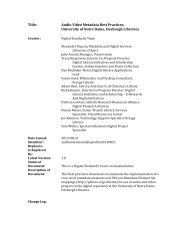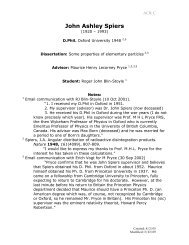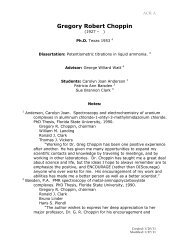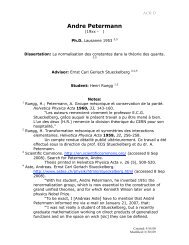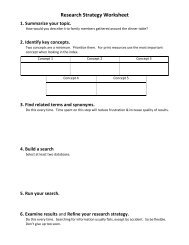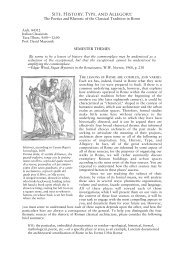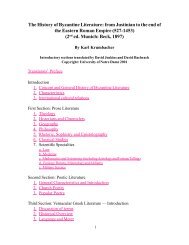Research Strategy Worksheet
Research Strategy Worksheet
Research Strategy Worksheet
You also want an ePaper? Increase the reach of your titles
YUMPU automatically turns print PDFs into web optimized ePapers that Google loves.
<strong>Research</strong> <strong>Strategy</strong> <strong>Worksheet</strong>1. Summarize your topic.How would you describe it to family members gathered around the dinner table?2. Identify key concepts.Two concepts are a minimum. Prioritize them. For print resources use the most importantconcept when looking in the index.Concept 1 Concept 2 Concept 3Concept 4 Concept 53. Find related terms and synonyms.Do this every time. Time spent on this step will reduce frustration & increase quality of results.4. Build a searchDo this the first few times you use a resource5. Run your search.6. Examine results and Refine your research strategy.Do this every time.
<strong>Research</strong> <strong>Strategy</strong> <strong>Worksheet</strong>1. Summarize your topic.What are you trying to find? Describe it in one to two sentences2. Identify key concepts.The concepts are nouns or sometimes they are adjectives or verbs. They can be a single word(e.g., Yankees) or a phrase (e.g., New York). Identify at least two concepts. This will improveyour search results in step 6. Prioritize your concepts so that you know which one could bedropped, if needed.3. Find related terms and synonyms.For each concept – write down all the different ways someone might express the concept.Examples include: related terms (broader or narrower terms), synonyms, alternative spellings(British vs American), acronyms, scientific vs popular names, and registry numbers.Use secondary literature sources to increase your vocabulary. Examples include: Google,encyclopedia articles (Wikipedia vs World Book), dictionaries, handbooks, and asking experts.4. Build a searchEight questions to answer for each resource you plan to search:1. What subjects and publication types are included in the resource?2. What are the coverage dates of the resource?3. What Boolean operators are used?AND, OR, NOT, SAME, NEAR, NEXT, etc.4. Is truncation an option? If so, then what are the symbols?Cataly* = catalyst, catalysts, catalysis, catalytic, catalyse, catalyze, catalysotype5. Are wildcards an option? If so, then what are the symbols?Wom$n = woman, women6. How do you search for a phrase?“Notre Dame”7. Is it possible to group words/phrases from the same concept?(Christmas OR Easter OR Thanksgiving OR holiday*) AND (dinner* OR supper OR meal*)8. Are there any unique features?5. Run your search.6. Examine results and Refine your research strategy.Examine your search results. Is there new information that adds to your vocabulary in step3?If so, then add it to your list and repeat step 5 including the new information. Did the searchyou build give you the results you expected? If not, then modify step 4 and repeat step 5.25/250 RuleResults under 25 – you’re missing somethingSubtract a key concept / add synonyms / use broader termsResults over 250 – you’re not going to look at this many recordsAdd a key concept / use narrower terms / search terms as a phrase / review articles


